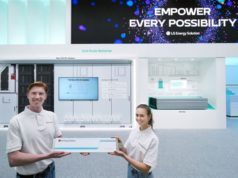CEO Ron Nash says enterprises are running more applications on hyperconverged systems as they look for ways to simplify their data centers and cut their costs.
As Ron Nash sees it, Pivot3 has been offering hyperconverged infrastructure products well before hyperconverged was a thing. The company, founded in 2003, began selling software-defined technologies, and several years later added processing to the mix, with many customers using Pivot3’s technology for surveillance workloads and virtual desktop environments.
Flash forward a few years, and OEMs began offering converged infrastructure solutions. These appliances, featuring tightly integrated compute, storage, networking and management software, were designed to help businesses better manage the changing demands brought on by such trends as cloud computing, mobility, data analytics and the internet of things (IoT). And more recently, hyperconverged infrastructures—which include storage and compute functionalities being combined into a single, highly virtualized server-based offering—have emerged.
Hyperconverged infrastructure has since become the fastest-growing segment in the converged infrastructure market, and it has become crowded and highly competitive. Top-tier OEMs including Dell, EMC, Hewlett Packard Enterprise (HPE), Cisco Systems and Lenovo are building out their portfolios to offer such solutions. At the same time, companies such as Nutanix and SimpliVity are selling software for hyperconverged environments.
Essentially, the industry has moved to where Pivot3 has been for years, said Nash, Pivot3’s CEO since 2014. Thanks to the new, high profile of hyperconverged technologies and the aggressive marketing of such players as Nutanix, businesses have begun turning their attention to the market—and that has been nothing but good for Pivot3.
“We have a free-spending company in Nutanix spending money in market and evangelizes it,” Nash told eWEEK. “Spending hundreds of millions of dollars in advertising will get you somewhere.”
The vendor has seen growth accelerate since the rise of hyperconverged infrastructure—customers are putting more applications on their hyperconverged environments—and there are indications that Pivot3 has its eyes on an eventual initial public offering (IPO), which could help inject more money into the operations.
According to the company, Pivot3 has deployed more than 16,000 hyperconverged infrastructures and flash storage arrays in more than 53 countries. More recently, in the first half of the year, the vendor saw revenue grow by 103 percent compared to the second half of 2015, added more than 400 customers and grew its workforce by more than 40 percent.
In addition, the company in March raised another $55 million in financing, shortly after Pivot3 bought storage vendor NexGen. In June, the vendor unveiled the first product from the acquisition, the vSTAC SLX, combining Pivot3’s vSTAC hyperconverged solution with NexGen’s flash arrays and quality-of-service (QoS) management software.
Industry analysts are forecasting that the hyperconverged infrastructure space will continue to grow over the next several years. IDC analysts expect the market will increase to more than $4.7 billion in 2019 from $981.91 million last year. Gartner analysts say the space will reach $2 billion this year and almost $5 billion by 2019.
Driving the growth is the need for improved simplicity in data centers, which are becoming increasingly complex due to the cloud, data analytics, the proliferation of mobile devices, virtualization and mobility. Enterprises want to reduce costs while bringing greater scalability and flexibility to their infrastructures.
Nash said he is seeing these trends playing out with Pivot3. Six months ago, most customers were buying hyperconverged offerings to run a single application such as video surveillance, databases or virtual desktop infrastructures (VDI), he said. Today, businesses are putting more applications on a single system, seeing the benefits of the scalability hyperconverged infrastructures can offer.
“People buy one app, then load it [on a hyperconverged system], then load another app onto it,” Nash said, noting that 28 percent of new sales are for systems to run multiple applications. “People are buying platforms to cut costs, and people are putting four, five, 10 apps onto it. … That’s one of the things going on, and that’s a positive thing.”







